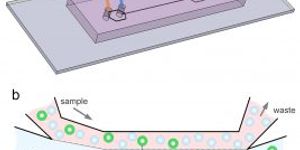Researchers have developed a 3D hydrogel based on hyaluronic acid, a biocompatible substance. The gel could quickly and effectively screen hundreds of potential drugs in the treatment of highly invasive cancers. Previously, 3D hydrogels were used to enhance stem cells for overcoming certain diseases or degeneration. However, in this study the gels are used to mimic the environment of lung cancer—allowing cancer cells to invade instead of healthy cells.
Learn more about the general use of hydrogels:
Cell invasion represents a critical hallmark of cancer and the gel intends to represent that purpose. "In highly invasive diseases, there is a crucial need to screen for both of these functions," says U of T Engineering Professor Molly Shoichet. "We now have a way to do this. We can conduct this in a 384-well plate, which is no bigger than your hand. And with image-analysis software, we can automate this method to enable quick, targeted screenings for hundreds of potential cancer treatments.”
One example used in the study is the drug screening for a rare lung disease affecting females-- lymphangioleiomyomatosis (LAM). The study screened for more than 800 drugs for both cancer-cell growth and invasion and results were published in Advanced Materials.
LAM cells growing within the hydrogel designed to emulate the microenvironment of the lung.
Credit: Molly Shoichet
"This has, and continues to be, a great collaboration that is advancing knowledge at the intersection of engineering and biology," says Shoichet.
Source: Science Daily









